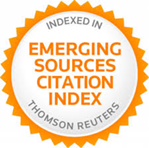“No idea what it means”. Polish Language in Latin American Jewish Writers’ Novels
DOI:
https://doi.org/10.37536/preh.2023.11.2.1668Keywords:
Latin American Jewish Literature, Travel Writings, Holocaust, Postmemory, LanguageAbstract
The article analyses the presence of the Polish language in the literary output of selected Latin American Jewish writers. The following texts are interpreted from this perspective: the long story Oh gueto my love by Guatemalan Eduardo Halfon, and the novels: Poste restante by Chilean Cynthia Rimsky, The Letters That Never Came by Uruguayan Mauricio Rosencof, and Lengua vespertina [Vespertine Language] by Argentinian Perla Sneh. The texts in question relate the narrator´s journey to Poland (meaning, to their grandparents’ land of origin), during which attempts are made to establish different modes of communication with the natives, whose language remains unintelligible. Thereby, it connotes the incomprehensible, also as a metaphor of the incomprehensibility of the past atrocities. Most of the time, the narrator needs to request the assistance of an interpreter who filters the information received from a native speaker and acts as an intermediary between the two cultures. The interpreter intermediation takes place as well in the paradigmatic documentary Shoah by Claude Lanzmann, which is a reference point to some of the analyzed texts. The presence of Polish in Latin American texts written in Spanish ranges from merely residual displays (in the form of single words or/and proper names) to more complex reflection about the possibility of adopting Polish as a language of literary writing and its role in the recuperation of one´s own identity and history. Moreover, the affective charge of the Polish language is considered, starting from the assumption that –at least in Holocaust testimonies– its neutrality and objectivity are bound to be questioned.
References
Acosta Díaz, Jennifer C. (2013). “Experiencia de viaje en Poste restante de Cynthia Rimsky”, Entrehojas: Revista de Estudios Hispánicos, 4. DOI: https://doi.org/10.5206/entrehojas.v4i1.6148
Bojarska, Katarzyna, Andrzej Leder, Grzegorz Niziołek y Małgorzata Szpakowska (2014). “Psychoanaliza Zagłady”, Dialog, 2. <https://e-teatr.pl/psychoanaliza-zaglady-a176680> (9 de diciembre de 2021).
Cánovas, Rodrigo (2012). “Voces judaicas en México y en Chile. Nuevos acogimientos, antiguas huerfanías”, in Múltiples identidades. Literatura judeo-latinoamericana de los siglos XX y XXI, ed. Verena Dolle. Madrid/Frankfurt: Iberoamericana/Vervuert, 227-241. DOI: https://doi.org/10.31819/9783954870516-002
Chomątowska, Beata (2012). Stacja Muranów. Wołowiec: Czarne.
Dolle, Verena (2012). “Introducción”, in Múltiples identidades. Literatura judeo-latinoamericana de los siglos XX y XXI, ed. Verena Dolle. Madrid/Frankfurt: Iberoamericana/Vervuert, 9-21. DOI: https://doi.org/10.31819/9783954870516
Engelking, Barbara y Jacek Leociak (2009). The Warsaw Ghetto: A Guide to the Perished City. Yale University Press.
Estrin, Laura (2018). “Lengua vespertina en la tarde de las separaciones”, Cuarta Prosa. <https://cuartaprosa.com/2019/04/15/lengua-vespertina-en-la-tarde-de-las-separaciones-laura-estrin/> (12 de diciembre de 2021).
Felman Shoshana (2000). “In an Era of Testimony: Claude Lanzmann’s ‘Shoah’”, Yale French Studies, 97: 103-150. DOI: https://doi.org/10.2307/2903217
Głowacka, Dorota (2016). “Współ-pamięć, pamięć negatywna i dylematy przekładu w wycinkach z Shoah Claude’a Lanzmanna”, Teksty Drugie, 6: 297–311. DOI: https://doi.org/10.18318/td.2016.6.17
Halfon, Eduardo (2012). La pirueta. Valencia: Pre-textos.
Halfon, Eduardo (2014). Monasterio. Barcelona: Libros de Asteroide.
Halfon, Eduardo (2015). Signor Hoffman. Barcelona: Libros de Asteroide.
Halfon, Eduardo (2017). Duelo. Barcelona: Libros de Asteroide.
Halfon, Eduardo (2018). Oh gueto mi amor. Edición Kindle. Madrid: Páginas de Espuma.
Halfon, Eduardo (2019). El boxeador polaco. Barcelona: Libros de Asteroide.
Hirsch, Marianne (2008). “The Generation of Postmemory”, Poetics Today, 29.1: 103-128. DOI: https://doi.org/10.1215/03335372-2007-019
Joffrin, Laurent (1985). “La Pologne au banc des accusés”, Libération, 25 de abril.
Kuryluk, Ewa (1985). “Memory & Responsibility: Claude Lanzmann’s Shoah”, The New Criterion, 4.3: 14.
Leder, Andrzej (2014). Prześniona rewolucja: ćwiczenie z logiki historycznej. Warszawa: Wydawnictwo Krytyki Politycznej.
Lehrer, Erica T. (2013). Jewish Poland Revisited. Heritage Tourism in Unquiet Places. Bloomington/Indianapolis: Indiana University Press.
Leociak, Jacek (2001). “Aryjskim tramwajem przez warszawskie getto, czyli hermeneutyka pustego miejsca”, in Maski współczesności, ed. Lidia Burska y Marek Zaleski. Warszawa: IBL, 75-87.
Małczyński, Jacek (2009). “Drzewa żywe pomniki w Muzeum – Miejscu Pamięci w Bełżcu”, Teksty Drugie, 1-2: 208-214.
Miłosz, Czesław (1943). “Campo di Fiori”, trad. Juan Carlos Villavicencio. <http://nadiesalvoelcrepusculo.blogspot.com/2016/10/campo-dei-fiori-czeslaw-milosz-polonia.html> (9 de diciembre de 2021).
Niziołek, Grzegorz (2016). “Lęk przed afektem”, Didaskalia, 131: 9-17.
Oliver, María Paz (2016). “Los paseos de la memoria: representaciones de la caminata urbana en Cynthia Rimsky, Sergio Chejfec y Eduardo Halfon”, Iberoromania, 83: 16-34. DOI: https://doi.org/10.1515/ibero-2016-0003
Pastor, Sheila (2020). “Trazas y trizas del viaje: Poste restante, de Cynthia Rimsky, modelo textovisual”, Pasavento. Revista de estudios hispánicos, VIII.1: 119-134. DOI: https://doi.org/10.37536/preh.2020.8.1.688
Raczymow, Henri (1994). “Memory Shot Through With Holes”, trad. Alan Astro, Yale French Studies, 85 (Discourses of Jewish Identity in Twentieth Century France): 98-105. DOI: https://doi.org/10.2307/2930067
Rimsky, Cynthia (2010). Poste restante. Santiago de Chile: Sangría.
Rosencof, Mauricio (2014). Las cartas que no llegaron. Jaén: Alcalá Grupo Editorial.
Sneh, Perla (2018). Lengua vespertina. Buenos Aires: Nuevohacer.
Sneh, Perla (2011). “Judíos argentinos: opciones del nombre, huellas de la lengua”, in Pensar lo judío en la Argentina del siglo XXI, ed. Alejandro Dujovne et al. Buenos Aires: Capital Intelectual, 121-127.
Sosnowski, Saúl (2012). “Una identidad en la zona de las múltiples”, in Múltiples identidades. Literatura judeo-latinoamericana de los siglos XX y XXI, ed. Verena Dolle. Madrid/Frankfurt: Iberoamericana/Vervuert, 43-50. DOI: https://doi.org/10.31819/9783954870516-005
Sosnowski, Saúl (2000). “Fronteras en las letras judías-latinoamericanas”, Revista Iberoamericana, LXVI.191: 263-278. DOI: https://doi.org/10.5195/reviberoamer.2000.5765
Sztajnszrajber, Darío (2009). “Introducción. El posjudaísmo como ética”, in Posjudaísmo. Debates sobre lo judío en el siglo XXI, vol. 2. Buenos Aires: Prometeo Libros, 13-35.
Tokarska-Bakir, Joanna (2004). “Żydzi u Kolberga”, in Joanna Tokarska-Bakir, Rzeczy mgliste. Eseje i studia. Sejny: Pogranicze, 49-72.
Traverso, Enzo (2012). La historia como campo de batalla. Interpretar las violencias del siglo XX. Buenos Aires: FCE.
Waldman M., G. (2004). “La memoria, el viaje y la nueva identidad judía en América Latina. Estudio de un caso literario”, Anales de Literatura Chilena, 5: 221-225. DOI: http://dx.doi.org/10.4067/S0071-17132008000100002
Downloads
Published
How to Cite
Issue
Section
License
Copyright (c) 2023 Ewa Kobylecka

This work is licensed under a Creative Commons Attribution 4.0 International License.








